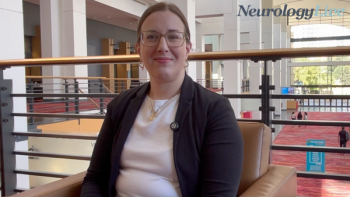Recent news from the ongoing interim analysis of the phase 1/2a MONARCH study (NCT04740476) reported positive safety in the STK-001 (Stoke Therapeutics) data in children and adolescents with Dravet syndrome (DS). The results showed that single and multiple doses of STK-001 up to 45 mg were found to be well-tolerated for patients with DS.1
All told, 74% of 27 patients treated with 3 doses of STK-001 demonstrated reductions observed from baseline in convulsive seizure frequency. Specifically, investigators observed median reductions of 55% in the 45mg (n = 6), 20% in the 30 mg (n = 17), and 41% in the 20 mg (n = 4) cohorts from day 29 of their first dose to 3 months after receiving their last dose.
Barry Ticho, MD, PhD, chief medical officer of Stoke Therapeutics, said in a statement, “We are encouraged by the data from our ongoing studies of STK-001, which continue to demonstrate favorable safety findings and reductions in seizure frequency among a highly refractory group of patients.”1 The company plans to provide additional details about the data from MONARCH at the upcoming 2022 American Epilepsy Society annual meeting, December 2-6, Nashville, Tennessee.
The interim analysis on the safety was based on patients (n = 55) who were given single or multiple doses of STK-001 (10 mg, 20 mg, 30 mg, 45 mg) and followed for up to 6 months after the last dosage. Similarly, the interim analysis on efficacy included patients (n = 27) treated with multiple doses (20 mg, 30 mg, 45 mg) of the drug and were followed for three months after the last dosage.
Treatment-emergent adverse events (TEAEs) in relation to the study drug were observed in 15 out of the 55 patients (27%). The adverse events were mild to moderate in severity with the study drug and none of the TEAEs patients experienced led to withdrawal from the drug.
“Half of the patients in these studies were taking 4 or more antiseizure medicines, including fenfluramine, setting a high bar for STK-001 to demonstrate additional benefit. Even so, 74% of patients experienced a reduction in seizure frequency following three doses of STK-001,” Ticho noted in a statement.1
Progressive Worsening of Gait, Motor Abnormalities Identified in Adults With Dravet Syndrome
The 2 older patients, ages 47 and 51 years at last evaluation, were ambulatory in their first assessment in 2014, but were no longer able to walk in 2019 when the second assessment was done.
Based on the data from the pharmacokinetic (PK) and cerebrospinal fluid (CSF) exposure findings, there was a dose-dependent increase in plasma from the study drug. Specifically, there was a greater increase between 30 mg and 45 mg in comparison with what was observed with 20 mg and 30 mg. The plasma PK profile of STK-001 was consistent across the ADMIRAL and MONARCH study patients who were treated at the same dose level. For single and multiple intrathecal doses of STK-001, the cerebrospinal fluid (CSF) exposure was measurable up to 6 months, which indicated a sustained exposure of STK-001 within the brain.
“Most notable is the 55% median reduction observed among the small group of patients treated with 3 doses of 45 mg. Based on these data, we believe we have entered the therapeutic range, which is translating to a clinical benefit for patients. We look forward to additional data in 2023,” Ticho said in a statement.1
Previous coverage of the MONARCH study showed that single doses of the drug up to 30 mg and multiple doses up to 20 mg were well-tolerated and had no safety concerns for children and adolescents with DS. The interim analysis had data on 21 children and adolescents treated with either 10-mg (n = 5), 20-mg (n = 4), or 30-mg (n = 6) single doses of STK-001. Also included were 6 patients on multiple ascending doses of 20 mg, where the majority received 3 monthly doses of the drug.2
The previous data showed TEAEs related to the study drug were reported in 3 of the 21 patients (14%), with the most common TEAES being headache, irritability, vomiting, seizure, and back pain. All serious treatment-emergent AEs were recorded in 4 patients (19%) and were not related to STK-001. The PK model findings showed a correlation between treatment with STK-001 and levels in plasma and CSF. There was an estimated 95% of patients predicted to have pharmacologically active STK-001 brain cells following 3 doses of 30 mg administered 1 month apart.
REFERENCES
1. Stoke Therapeutics Reports Third Quarter Financial Results and Provides Business Updates. News release. Stroke Therapeutics. November 14, 2022. Accessed November 24, 2022. https://investor.stoketherapeutics.com/news-releases/news-release-details/stoke-therapeutics-reports-third-quarter-financial-results-and-1
2. Stroke Therapeutics announces positive interim safety, PK and CSF exposure data from the phase 1/2a MONARCH study of STK-001 in children and adolescents with Dravet syndrome. News release. Stroke Therapeutics. September 21, 2021. Accessed November 29, 2021. https://investor.stoketherapeutics.com/news-releases/news-release-details/stoke-therapeutics-announces-positive-interim-safety-pk-and-csf










































